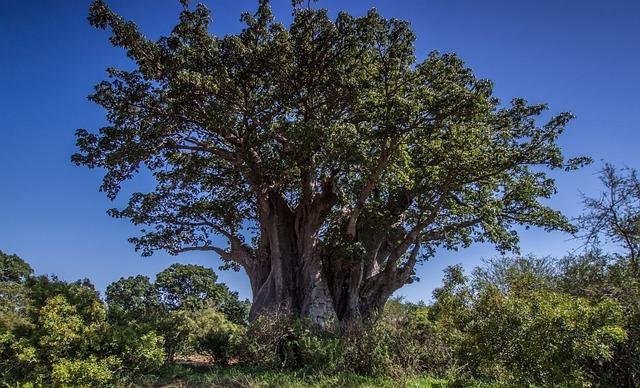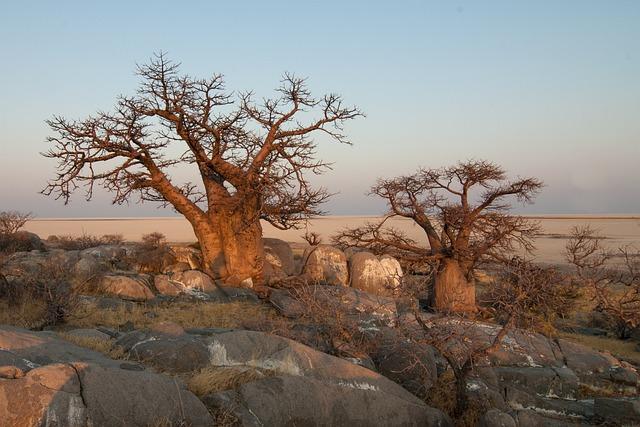- Introduction
- What Is Baobab?
- Species of Baobab
- Cultural Significance of Baobab
- Benefits and Uses of Baobab
- Conclusion
- FAQs
- References
Introduction
The Baobab tree, also known as the "Tree of Life," is a symbol of culture, biology, and survival across many African nations. This article will explore what exactly the Baobab tree is, the various species within the genus Adansonia, its long-standing cultural significance, and the numerous health benefits and uses of Baobab.
The Baobab is more than just a tree – it is deeply embedded in the lifestyles of various indigenous cultures and ecosystems. Throughout this blog, we'll cover everything from the structure and life cycle of this fascinating plant to why it's increasingly being appreciated for its superfood properties globally. Let's dive in!
What Is Baobab?

(Image: Pixabay/@baechi)
The Baobab, part of the genus *Adansonia*, is a unique deciduous tree native to Africa, Madagascar, and Australia. Known for its enormous trunk and distinctive silhouette, these trees can live for thousands of years and grow up to 100 feet tall. Sometimes described as "upside-down trees" due to their root-like appearance during barren periods, their bulbous trunks are made to store large amounts of water, which helps them survive harsh droughts.
Baobabs are often used as sources of food, shelter, and even medicine. The Baobab fruit, seeds, and leaves have been traditionally harvested by locals for centuries. Today, the powder derived from Baobab fruit has gained international recognition as a nutrient-rich superfood, packed with vitamin C, calcium, potassium, magnesium, antioxidants, and fiber.
Aside from its natural beauty and ecological importance, the Baobab tree offers habitat to various wildlife, including birds, bats, and insects, helping to maintain biodiversity in the environments it inhabits.
Species of Baobab

(Image: Pixabay/@jcoope12)
There are nine recognized species of Baobab, each with distinct traits but sharing similar growth patterns and environmental needs.
- *Adansonia digitata* (African Baobab) – This is the most well-known species and commonly found throughout mainland Africa. It is the largest of all Baobab species.
- *Adansonia grandidieri* (Grandidier’s Baobab) – Found only in Madagascar, characterized by its tall, cylindrical trunk. It is critically endangered due to habitat loss.
- *Adansonia gregorii* (Australian Baobab) – Native to north-western Australia, distinguished by its smaller size compared to its African relatives.
- The remaining six species are mainly endemic to Madagascar, such as *Adansonia rubrostipa* (Fony Baobab) and *Adansonia za*.
While some Baobab species are thriving, others are under significant threat, particularly those in Madagascar where rapid deforestation impacts their survival.
Cultural Significance of Baobab

(Image: Pixabay/@u_fg0tkeqgiy)
The Baobab tree has long played an essential role in the folklore and daily lives of communities across Africa and Madagascar. In many African cultures, the Baobab represents wisdom, longevity, and strength. The tree has spiritual meaning in rituals and legends, symbolizing life and positivity due to its ability to live through harsh conditions.
Beneath these towering trees, communities throughout history have gathered for discussions, decision-making processes, and social interaction. Some ancient Baobabs, measuring more than 30 feet around, were hollowed out and used as meeting places, storage rooms, or in certain cases, even prisons.
The cultural significance of Baobab extends beyond Africa’s borders. Its resilient and resourceful nature has made it a global icon, appearing in literature, art, and even children’s folktales like “The Little Prince” by Antoine de Saint-Exupéry.
Benefits and Uses of Baobab

(Image: Pixabay/@hbieser)
Beyond its cultural and biological value, the Baobab provides several practical and nutritional benefits:
- **Superfood**: Baobab fruit is recognized as a superfood loaded with vitamin C, potassium, magnesium, and calcium. It contains higher antioxidant levels than many other well-known fruits.
- **Health Benefits**: Consuming Baobab can boost the immune system, support better digestion due to high fiber content, aid in weight loss, and maintain healthy skin through its rich supply of vitamin C.
- **Use in Cosmetics**: Baobab oil, extracted from the seeds, is valued in cosmetic products because it moisturizes skin and hair while also having anti-inflammatory properties.
- **Medicinal**: In traditional African medicine, every part of the tree is used. The leaves can be boiled as a remedy for fever, while the bark is often used for treating colds and digestive discomfort.
- **Sustainable Livelihoods**: By harvesting Baobab sustainably, communities in Africa can enhance their income, preventing over-reliance on trees' timber resources and helping preserve these magnificent species.
Baobab’s uses go far beyond simple consumption. For many, the preservation of Baobab trees has also become instrumental in fighting climate change and promoting eco-friendly agriculture.
Conclusion
The Baobab tree is undeniably a wonder of nature. Not only is it an iconic component of both African landscapes and culture, but its range of practical benefits—from human nutrition to sustainability—catapult its status as one of the world’s most valuable trees. Despite facing threats from deforestation and climate change, conservation efforts can help ensure that Baobabs continue to thrive for generations to come.
FAQs
How old can Baobab trees get?
Some Baobabs are estimated to live for over 2,000 years, making them some of the oldest living trees on Earth.
Is Baobab fruit safe to eat?
Yes! Baobab fruit is edible and highly nutritious, often consumed in powdered form or added to smoothies and cereals for a vitamin boost.
Why is Baobab called the "Tree of Life"?
The Baobab is referred to as the "Tree of Life" because it provides food, water, shelter, and medicine to people and animals living in proximity, especially in arid regions.
Can Baobab trees help the environment?
By absorbing large amounts of CO2, Baobab trees can play an essential role in fighting climate change. Additionally, their unique ability to store water helps conserve resources in dry seasons.

